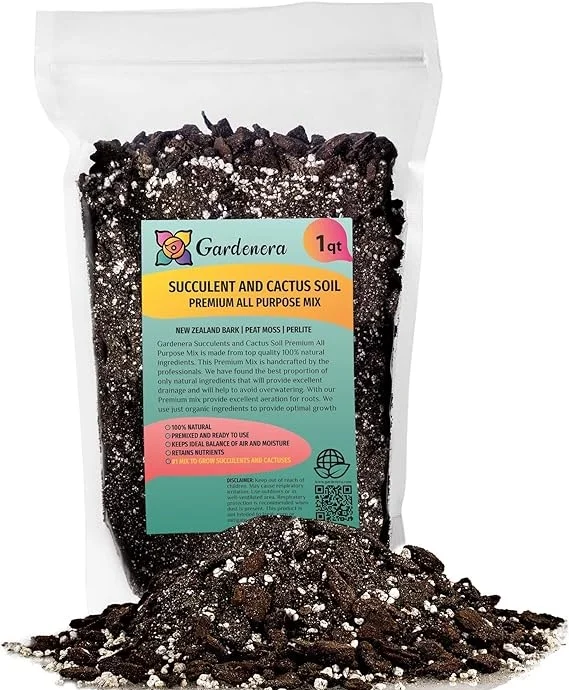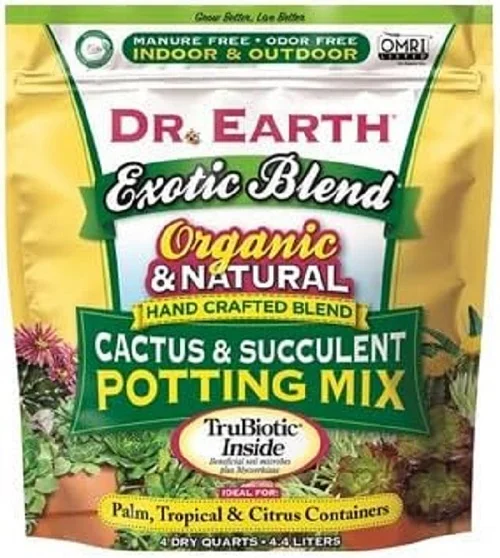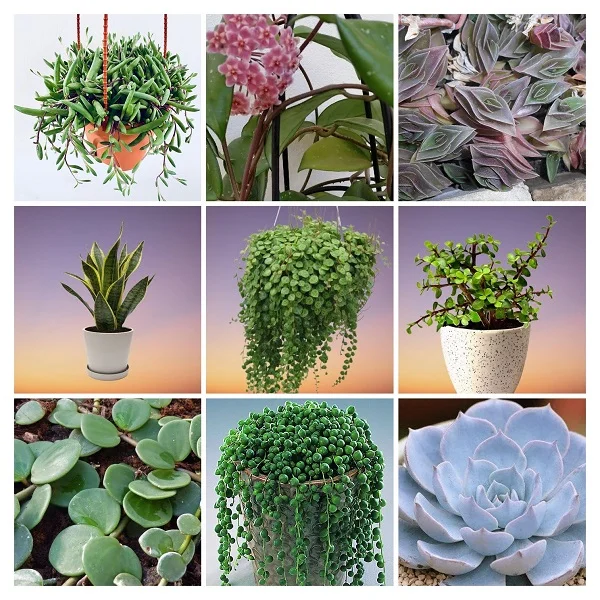Crassula perforata (String of Buttons Plant) Care Indoors, Common Problems & Solutions
Some links in this post may be affiliate links
Crassula perforata (String of Buttons Plant) flourishes in bright light with some sunlight, average warmth and humidity, and loose, well-drained soil coupled with monthly feeding in spring and summer.
String of Buttons Plant also called Crassula String of Buttons or String of Buttons Crassula is among the popular Crassula varieties and bears triangle-shaped, gray-green leaves with a rosy pink hue along the edges in bright light.
The fleshy leaves and stems store water, which allows the plant to go for a considerably long period without being watered making it one of the best drought-tolerant plants for the home, office and any other suitable place.
The leaves form opposite pairs that create a spiral shape around the plant's stem giving it a stacked appearance. Under bright light, the succulent, triangle-shaped, gray-green leaves have a rosy pink hue along the edges. It bears a long inflorescence with many tiny cream flowers.
String of Buttons Succulent stems start off upright but begin to trail on the ground due to the weight of the leaves as they age placing this plant one of the best hanging succulent plants for indoors.
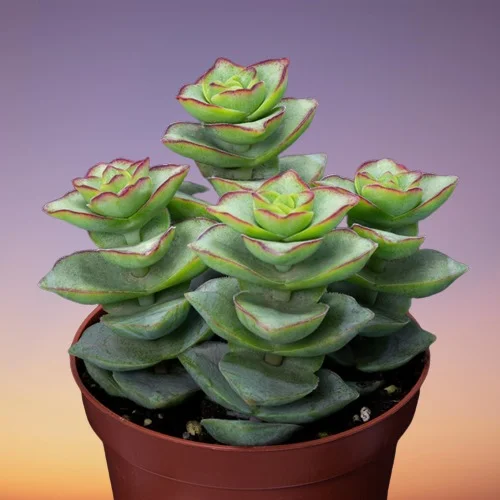
Botanical name: Crassula perforata
Family: Crassulaceae
Common names: String of Buttons Plant
Origin
Crassula perforata is native to the arid parts of South Africa where it is found growing in thicket vegetation and rocky slopes.
Size
Crassula String of Buttons grows to a height of 2 feet with 2-3 feet wide trailing stems which make it one the popular string of plants for growing indoors.
Is Crassula perforata toxic?
Yes. Like its cousin the Jade Plant, String of Buttons Plant is thought to be toxic to both humans and pets. Keep the plant away from the reach of children and pets.
Where to Buy
Would you like to add Crassula perforata to your plant collection? You may acquire these plants online from Amazon (Link to Amazon).
How to Care for Crassula perforata Indoors
To care for Crassula perforata indoors, give it bright light with 4-6 hours of direct sunlight, warmth of 15-260C, humidity of 50-55% and moderately moist, fast-draining soil that is low in organic matter coupled with monthly feeding in spring and summer.
String of Buttons Plant has no need for regular repotting as it grows best when pot-bound. Pruning is required to keep the plant neat, to minimize pest and disease infestations and to rejuvenate growth. Keep reading for more on these growing conditions and how to achieve them.
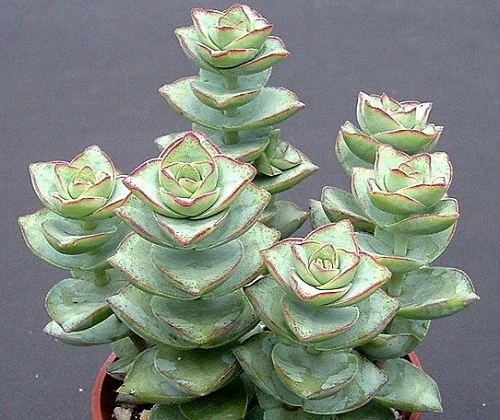
Watering
How often should I water Crassula perforata?
Water your Crassula perforata liberally in spring and summer and allow the soil to dry out between waterings. Take care not to overwater to prevent rotting, yellowing and leaf fall.
Significantly decrease in fall and winter as growth is minimal at this time. Do not allow the soil to dry out for too long to avoid wilting, drooping, yellowing and leaf drop.
Use room temperature water prevent cold shock which cause slowed growth and sudden leaf loss. Only water with chlorine-free water like rain water to prevent browning of leaves.
Ensure that the pot has a drainage hole and the soil is fast-draining to avoid getting soggy soil as it can lead to rotting and death of the plant.
Avoid wetting the foliage during watering to minimize fungal diseases; you may water from the bottom. Always empty the catch plate to prevent waterlogging of the soil.
Light Requirements
Does Crassula perforata need sunlight?
Yes. Crassula perforata grows best in bright light with about 4-6 hours of sunshine per day. Under bright light, the leaves take a rosy pink hue along the edges. Keep the plant away from hot midday sunshine to prevent scorching.
In too low light, the plant becomes leggy with yellowish leaves and may drop the leaves. Where the natural lighting is not sufficient you may use full spectrum grow lights to supplement it.
Rotate the pot regularly to ensure that the plant receives light on all sides for uniform growth and to prevent lopsided growth.
Temperature & Humidity
Crassula perforata prefers a warmth of 15-260C. Keep it away from sources of drafts like windy doors and window, air conditioning units, hot air vents and others as they can cause stunted growth and leaf drop.
String of Buttons Plant does well in a humidity of 50-55%; it has no need for extra humidity. Do not mist the leaves and ensure that there is good air circulation to reduce fungal disease infestations which are prevalent in damp, poorly aerated conditions.
Potting Soil
The best soil for Crassula perforata should be low in organic matter, loose and fast-draining to prevent waterlogging. The soil should be loose enough to allow water to drain out fast enough. Most Cactus and succulents mixes are ideal for this succulent.
Fertilizer
Feed your String of Buttons Plant with a balanced, liquid fertilizer every 4 weeks in spring and summer to encourage a lush growth.
Do not feed in fall and winter as growth is minimal and feeding at this time may lead to fertilizer burn; brown leaf tips and edges.
Regularly flush out excess salts by running a stream of water through the soil until the water comes out through the drainage hole. Let it running for 5-10 moniutes to get rid of most of the salts.
Repotting
Repot Crassula perforata at the beginning of the growing season (spring to early summer), only when pot-bound or when the potting medium is completely broken down.
Use a pot one size larger than the current one to avoid overpotting which can result in rotting due to waterlogging. Make sure that the pot has a drainage hole and the soil drains easily to prevent root-rot and eventual death of the plant.
Use a clay pot rather than a plastic or ceramic one as a clay pot is more porous which allows the soil to dry out much faster, therefore, preventing it from staying wet for long periods of time. Take a look at these terracotta pots with saucer on Amazon.
Pruning
Pruning String of Buttons Plant involves regular removal of dead foliage and flowers to maintain the plant neat as well as discourage pests and diseases.
Cutback the straggly stems at the beginning of the growing season (spring to early summer) to rejuvenate growth and encourage a bushy growth.
Crassula perforata Propagation
Crassula perforata (String of Buttons Plant) is propagated from offsets, leaf cuttings or stem cuttings. The cuttings can be rooted either in water or in soil. The best time to propagate is at the beginning of the growing season (spring to early summer), when in active growth for faster establishment.
Learn how to propagate Crassula perforata (String of Buttons Plant) by 5 easy methods.

Crassula perforata Problems & Remedies
Crassula perforata (String of Buttons Plant) problems are plant dying, leaf fall, leggy growth, pests and diseases among others. Keep reading for more on these problems and their solutions.
Plant dying
Why is my Crassula perforata dying?
Your Crassula perforata is dying due to root-rot which is prevalent in soggy soil. The disease is characterized by yellowing and wilting of the leaves which is rapidly followed by browning and plant collapse.
How to fix it
- Carefully slip the plant out of its pot and inspect the roots; brown-black mushy roots indicate root-rot.
- Trim the rotten roots and treat the healthy roots with a copper-based fungicidal solution as indicated by the manufacturer.
- Repot the plant in fresh, fast-draing soil and a fresh pot with a drainage hole to prevent sogginess.
- Position the plant in very bright light with at least 4-6 hours of sunshine.
- Stop watering for a few days to give the plant enough time to recover. After the dry period, resume routine care.
Leaf drop
Why are my Crassula perforata leaves falling off?
Your Crassula perforata leaves are falling off due to too little light, inconsistent watering, soggy soil, drafts, use of cold water, nutrients deficiency, pest infestations, excessive touching or aging.
How to fix it
Too little light: Position the plant in bright light with 4-6 hours of direct sunlight or use a grow light if you do not have adequate light in your home.
Inconsistent watering: Do not water on a schedule. Water when the top half of soil dries out but never allow the soil to dry out completely.
Soggy soil: Use loose, fast-draining soil and a pot with a drainage hole.
Drafts: Keep the plant away from sources of drafts like windy doors, drafty windows, AC units, hot air vents among others.
Nutrients deficiency: Feed the plant with a cactus and succulents fertilizer every 4 weeks in spring and summer.
Use of cold water: Use water that is at room temperature to prevent cold shock.
Pest infestations: Regularly inspect the plant for pests and carry out timely control measures.
Excessive touching: Keep the plant away from the line of traffic and avoid moving it around unnecessarily and take care when moving it.
Aging: This is a natural process. As the lower leaves mature, they turn yellow, brown and eventually drop off.
Leggy growth
Leggy growth on Crassula perforata is caused by underwatering, insufficient light or nutrients deficiency.
How to fix it
Underwatering: Water when the top half of soil feels dry to the touch. Never allow the soil to dry out completely.
Insufficient light: Position the plant in bright light with 4-6 hours of sunlight or instal a grow light if the natural lighting is not enough.
Nutrients deficiency: Feed the plant with a cactus and succulents fertilizer every 4 weeks in spring and summer.
Pests
Common pests on String of Buttons Crassula are scale insects, mealybugs and spider mites which are prevalent in dry, stuffy conditions.
How to fix it
- Isolate the affected plant to reduce spread to other plants.
- Spray the affected plant with a solution of 4 parts water to 1 part rubbing alcohol to get rid of the pests. Make sure to cover the entire plant.
- Check between the leaves for these pests and carry out timely control measures.
- Maintain the plant well pruned to discourage the pest infestations.
Diseases
Crassula perforata is prone to leaf spot disease and powdery mildew which are common in overwet conditions coupled with poor air circulation.
How to fix it
- Isolate the affected plant to minimize spread to the other plants.
- Treat the affected plant with neem oil as per the manufacturer's recommendations.
- Improve ventilation to ensure free air flow to discourage the diseases.
- Water from the bottom to avoid wetting the leaves.
- Always allow the soil to dry out between waterings.
- Use a pot with a drainage hole and well-draining soil to prevent waterlogging.
You liked it? Share on social media.
Related Content
Amazon Associates Disclosure
Homeplantsguide.com is a participant in the Amazon Services LLC Associates Program, an affiliate advertising program designed to provide a means for sites to earn advertising fees by advertising and linking to amazon.com.

